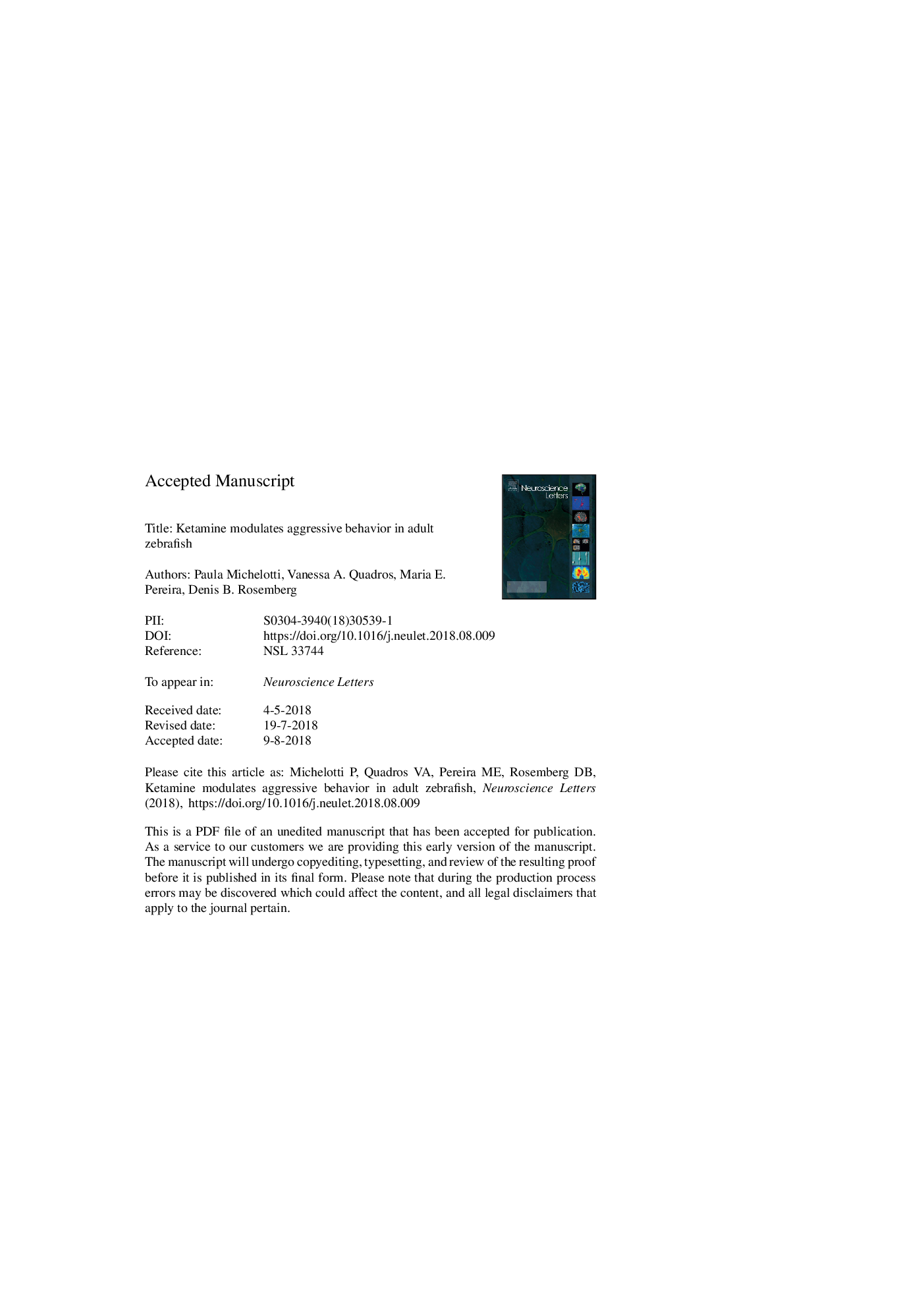| Article ID | Journal | Published Year | Pages | File Type |
|---|---|---|---|---|
| 8841347 | Neuroscience Letters | 2018 | 15 Pages |
Abstract
Ketamine is a non-competitive glutamatergic antagonist that induces analgesia and anesthesia. Although ketamine displays anxiolytic and antidepressant properties, it may induce pro-psychosis and hallucinogen effects, as well as stereotypic behaviors following acute administration at sub-anesthetic doses. Since heightened aggression is maladaptive and may comorbid with various neuropsychiatric disorders, we aimed to investigate whether ketamine modulates aggressive behavior in adult zebrafish. Fish were acutely exposed to 2, 20, and 40âmg/L ketamine for 20âmin and their locomotion, exploratory activity, and aggression towards mirror were further assessed. Ketamine (2âmg/L) increased aggression-related phenotypes, while 20 and 40âmg/L reduced aggression and elicited stereotypic behaviors by causing hyperlocomotion, altering motor patterns, and increasing circling behavior at the higher concentration tested. Collectively, our data expand the utility of zebrafish models to investigate the influence of sub-anesthetic concentrations of ketamine on aggression behavior domain in translational neuropsychiatric research field.
Keywords
Related Topics
Life Sciences
Neuroscience
Neuroscience (General)
Authors
Paula Michelotti, Vanessa A. Quadros, Maria E. Pereira, Denis B. Rosemberg,
